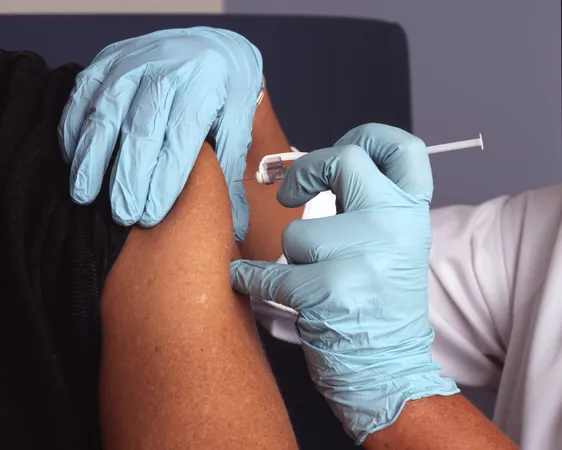
Revolutionary Blood Test Uncovers Parkinson’s Disease Years Before Symptoms Appear!
2025-04-11
Author: Jia
Breakthrough Discovery at Hebrew University of Jerusalem
In a groundbreaking advancement, researchers at the Hebrew University of Jerusalem have introduced a revolutionary blood test capable of detecting Parkinson’s disease (PD) at its earliest stages—potentially years before any physical symptoms manifest. This innovative, RNA-based diagnostic tool promises enhanced accuracy, accessibility, and affordability, crucial factors in the realm of neurodegenerative disease detection.
The Current Diagnostic Dilemma
Currently, diagnosing Parkinson’s disease relies heavily on visible clinical symptoms such as tremors, stiffness, and impaired balance. Unfortunately, by the time these symptoms appear, up to 70% of dopamine-producing neurons in the brain's substantia nigra may have already been lost. Existing imaging technologies, like PET or DaT scans, are not only expensive but also limited to specialized centers and are applied relatively late in the disease's progression.
As a result, the journey to early diagnosis can be likened to cancer detection from fifty years ago, where late-stage diagnosis hinders effective treatment options.
The Science Behind the Breakthrough: RNA Fragments
Enter the new test, crafted by PhD student Nimrod Madrer and a collaborative team across Israel and the U.K. Their focus on transfer RNA fragments (tRFs)—once dismissed as mere cellular debris—has yielded powerful indicators of cellular stress and disease.
Crucially, they identified two markers: a rise in a specific family of tRFs linked to PD pathology and a drop in mitochondrial tRFs, signaling mitochondrial dysfunction—a hallmark of Parkinson’s disease. By measuring the ratio of these two RNA types with a standard qPCR assay, the researchers successfully detected early-stage Parkinson’s in individuals who previously showed no symptoms, boasting a remarkable diagnostic accuracy of 86% in validation trials.
Validated and Ready for Action!
The test underwent validation with samples from multiple international cohorts, including the renowned Parkinson’s Progression Markers Initiative, solidifying its credibility. Thanks to its dual qPCR format, this test stands ready for routine clinical use, unlike more complex and cumbersome proteomic or imaging approaches.
Prof. Hermona Soreq, a leading figure in the study, stated, "By focusing on tRFs, we’ve opened a new window into the molecular changes that occur at the disease's earliest stages."
More Than Just Diagnosis: Monitoring Disease Progression
What's more, the test shows potential for monitoring treatment efficacy. In patients undergoing deep brain stimulation (DBS)—a standard intervention for mid-stage PD—RGTTCRA-tRF levels decreased, suggesting the test could also track treatment response, thereby enhancing overall patient care.
A Game-Changer for Early Intervention
This early diagnostic tool could revolutionize Parkinson’s care. As experimental therapies, including neuroprotective agents and gene therapies, enter clinical trials, identifying high-risk individuals before motor symptoms emerge is vital. Targeting the disease at its roots rather than just its symptoms could pave the way for decelerating, or even halting, its progression.
The Hebrew University team has filed U.S. provisional patents for this groundbreaking technology and is already preparing for large-scale diagnostic trials to roll out the test into clinical practice.
Madrer summed it up perfectly: "This test has the potential to alleviate the uncertainty faced by patients and clinicians, offering a reliable and rapid method to identify the disease in its earliest stages."





 Brasil (PT)
Brasil (PT)
 Canada (EN)
Canada (EN)
 Chile (ES)
Chile (ES)
 Česko (CS)
Česko (CS)
 대한민국 (KO)
대한민국 (KO)
 España (ES)
España (ES)
 France (FR)
France (FR)
 Hong Kong (EN)
Hong Kong (EN)
 Italia (IT)
Italia (IT)
 日本 (JA)
日本 (JA)
 Magyarország (HU)
Magyarország (HU)
 Norge (NO)
Norge (NO)
 Polska (PL)
Polska (PL)
 Schweiz (DE)
Schweiz (DE)
 Singapore (EN)
Singapore (EN)
 Sverige (SV)
Sverige (SV)
 Suomi (FI)
Suomi (FI)
 Türkiye (TR)
Türkiye (TR)
 الإمارات العربية المتحدة (AR)
الإمارات العربية المتحدة (AR)